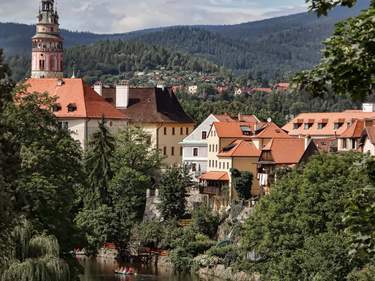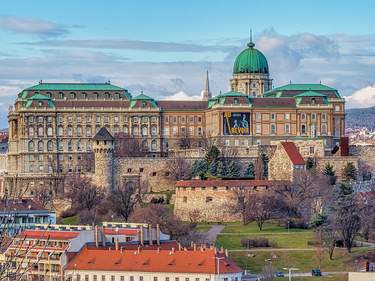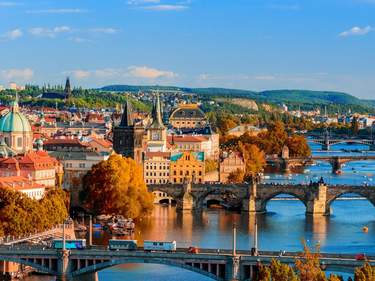Wooden churches of the Beskydy
Over at the eastern side of the region, the Beskydy Hills are dotted with striking wooden churches. Just outside Štramberk, Rybí has a fifteenth-century Gothic church with shingled roof, tower and onion dome steeple, while Hodslavice is home to the sixteenth-century wooden church of sv Ondrej.
Over in Radhošt', the wooden chapel of sv Cyril & Metodej offers an unbeatable view across the Beskydy; over to the south of Ceský Tešín, Guty is probably the most striking of all the Beskydy's wooden churches.
Štramberk
And in Moravia, the wooden architecture doesn’t stop with the churches: Štramberk is clumped under the conic Bílá hora (not to be confused with the Bílá hora in Prague) like an ancient funeral pyre. Although it feels very old indeed, many of its wooden cottages were built as recently as the first half of the nineteenth century.
Where Štramberk really shines is in displaying Wallachian architecture in situ: the unpainted cottages – simply constructed out of whole tree trunks – are (largely) free of tourists rather than cooped up and mummified in a sanitized skansen.
Moravský kras
Just over 25km northeast of Brno is Moravia's number-one tourist attraction: the limestone karst region of the Moravský kras. Although the Punkevní jeskyne, is the most extensive cave system, the other caves also feature spectacular stalactites and stalagmites and suffer much less from overcrowding.
Quite apart from the caves, the whole karst region boasts some dramatic and varied scenery, all smothered in a thick coating of coniferous forest and riddled with marked paths, providing great walking country.
Olomouc

_listing_1640546826392.jpeg)















